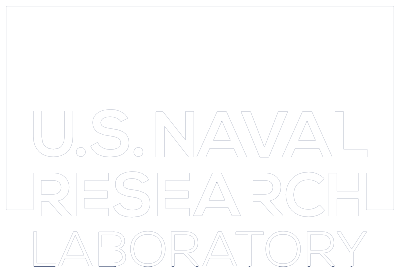The Mission

PUNCH is a NASA Small Explorer mission that will make global, 3D observations of the young solar wind, from the outermost solar atmosphere to the inner heliosphere. Images of unprecedented quality will help to close a 60-year gap in measurement and understanding of what occurs in this region of space. PUNCH launched on March 11, 2025.
The PUNCH mission consists of a constellation of four small satellites in Sun-synchronous, low Earth orbit that together will produce deep-field, continuous, 3D images of the solar corona as it makes a transition to the young solar wind: from 1.5° (6 R☉) to 45° (180 R☉) from the Sun. The PUNCH cameras sense normal visible light and its linear polarization which allows the 3D location of solar wind features to be measured.
Also check out: An Introduction to PUNCH: recent video presentations of PUNCH mission, science, and outreach
| Topic | Details |
|---|---|
| Science Goal | To determine the processes that unify the solar corona and heliosphere |
| Measurement | Visible-light imaging of sunlight scattered from free electrons |
| Spacecraft | Constellation of four ~40kg suitcase-sized satellites |
| Payload | 1x – Narrow Field Imager (NFI) coronagraph 3x – Wide Field Imager (WFI) heliospheric imager 1x – student-contributed X-ray spectrometer (STEAM) |
| Orbit | Polar (Sun-synchronous) Low Earth orbit, dawn/dusk alignment |
| Formation | 120° orbital phase separation between WFIs |
| Duration | 2 years after 90-day commissioning (est. 2024-2026) |
| Technical Team | SwRI – lead institute; spacecraft; WFI; operations NRL – NFI; optical testing RAL – detectors; calibration |
| Science Team | |
| Mission history | 2016 October - mission proposed 2017 July - selected for competitive Phase A 2019 July - selected for Phase B 2020 April - mission definition review 2021 June - preliminary design review 2021 July - KDP-C (transition to NASA Phase C, final design & early fabrication) 2021 November - directed to plan for rideshare with SPHEREx mission 2022 March - critical design review 2024 February - pre-environmental review 2025 January - pre-ship review; integration at Vandenberg Space Force Base 2025 Mar 11 - LAUNCH with SPHEREx on a Falcon 9 2025 June 9 - start of science operations |

Four satellites are necessary because PUNCH views the entire inner solar system continuously, and Earth blocks approximately half the view from any one location in orbit. The lone Narrow Field Imager (NFI) acquires an annular field of view (FOV) around the Sun. Three Wide Field Imagers (WFIs) acquire data in a trefoil on the sky. As the spacecraft orbit, the trefoil rotates on the sky and builds up the full 90° circular PUNCH FOV. Click on image to see movie of trefoil rotation.

Each of the four PUNCH spacecraft is just over a meter long and supports one instrument on the +Z deck (maintained toward the zenith in flight). Each spacecraft supports three-axis pointing (to within a few arc-seconds), dual-band high-speed downlink, orbital-trim propulsion, and sophisticated, autonomous fault recovery. The four spacecraft are launched and deployed in orbit from a single rocket. Their orbital formation is established over the first 90 days of flight. Click on image to see labeled version.

The four spacecraft are synchronized in flight. Each spacecraft orients +X at the Sun and holds inertial pointing for 30° of orbital motion (8 minutes elapsed time). At the end of the hold, it rotates 30° about the X axis, to maintain the Earth below the instrument reference plane. Every eight minutes, each PUNCH spacecraft acquires seven images: one unpolarized image and six polarized images in dual three-image sets. All four spacecraft are synchronized in-flight and the data are merged on the ground to produce the 3D imagery. Click on image to see a concept video of the launch and deployment.
PUNCH has an open data policy and all PUNCH data are freely available to anyone for any purpose.

The Narrow Field Imager (NFI) is a compact externally occulted coronagraph with a similar field of view to SOHO/LASCO-C3: from 6 to 32 R☉ on the sky. The external occulter blocks direct sunlight from entering the main optical aperture, which views the corona and starfield around the Sun using a compound lens system. Polarization is resolved using a polarizing filter wheel (PFW) assembly, and the image is digitized using a CCD camera assembly (CCA) with a 2kx2k active detector area. The PFW and CCA designs are common to both instruments.

The Wide Field Imager (WFI) is a wide-field heliospheric imager (HI) design based on STEREO/HI. It images from 18 to 180 R☉ on the sky. HI designs are analogous to coronagraphs, but in linear instead of circular geometry. WFI attenuates direct sunlight by over 16 orders of magnitude. The wide-field achromatic optics are based on the famous Nagler eyepiece in reverse geometry. Polarization and detection use the same PFW and CCA designs as NFI. PUNCH includes three copies of WFI, to achieve the required observing cadence.

STEAM will advance understanding of solar flares and help identify why the solar corona is far hotter than the solar surface by measuring enhancement of key elements and temperature in solar flares and solar active regions. It will do this by measuring the Sun’s X-ray spectrum in quiet conditions, with visible active regions, and during solar flares. STEAM is a subsidiary to the PUNCH NFI Observatory and will meet all thermal, structural, and electronic requirements imposed by the PUNCH project proposal. (STEAM home page)



